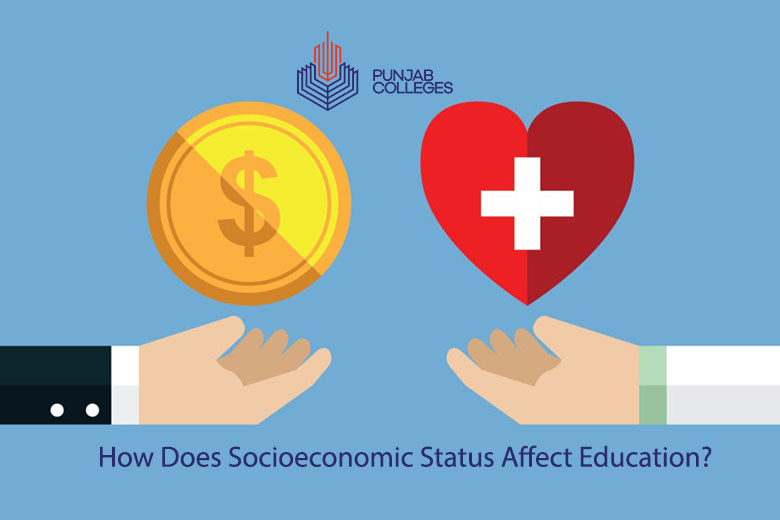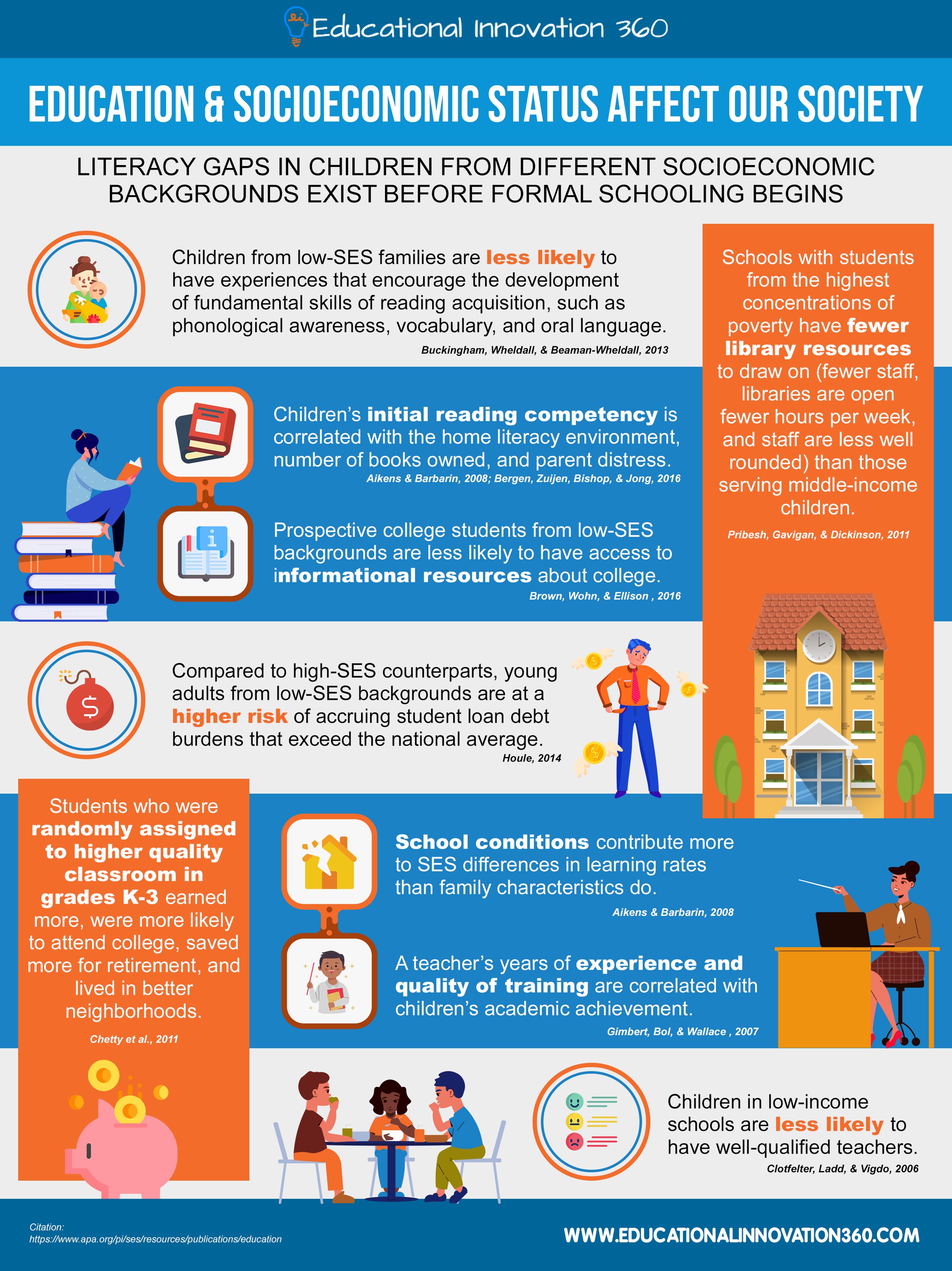Socioeconomic status, often abbreviated as SES, refers to the economic and social position of an individual or group within a society. It is typically determined by a combination of factors, including income, education, and occupation. Education, in turn, is a key factor in determining one's SES. In this essay, we will explore the relationship between SES and education and how it can impact an individual's opportunities and outcomes in life.
Research has consistently shown that there is a strong correlation between SES and education. Generally, those with higher SES tend to have higher levels of education, and vice versa. This relationship is often referred to as the "education ladder," as education can serve as a means for upward social mobility. Those with higher levels of education are more likely to secure high-paying jobs and achieve financial stability, which can lead to an increase in SES.
However, the relationship between SES and education is not a one-way street. SES can also impact an individual's access to education and the quality of education they receive. Those with lower SES may face financial barriers to pursuing higher education, such as the cost of tuition and related expenses. They may also have limited access to educational resources and opportunities, such as advanced courses and extracurricular activities. As a result, they may be less likely to graduate from high school or pursue postsecondary education.
In addition to the direct impact on an individual's education and career opportunities, SES can also have a long-term impact on health and overall well-being. Studies have shown that individuals with higher SES tend to have better health outcomes, including lower rates of chronic diseases and longer life expectancy. This is often attributed to the fact that those with higher SES have greater access to healthcare and can afford to make healthier lifestyle choices.
The relationship between SES and education is complex and multifaceted, and it highlights the importance of addressing social and economic inequality. There are a number of initiatives and policies that can help to level the playing field for individuals from lower SES backgrounds, such as financial aid programs, mentorship and support programs, and initiatives to improve the quality of education in disadvantaged communities. By addressing these issues, we can help to create a more equitable society in which all individuals have the opportunity to reach their full potential.
5 ways socioeconomic status affect educational progress

Racism may not be as harsh, or publically displayed, but African-Americans are not advancing at the same rates as whites. It was found that there is a great diversity of instruments at the individual or geographical level that allows measuring the position socioeconomic in the framework. Conclusion The above discussion makes three conclusions clear. Suggestions like; improving the overall resources and funding for the school can be beneficial to the overall educational system. Surprisingly, the ability of farmers to identify mosquitoes as the main cause of malaria had a negative influence in the model. Factors such as the quality of student learning behaviors, home environment, past experiences with education, and teacher attitudes are among the many factors that influence student achievement. What happens when the parents of a low SES are not educated and irresponsible? The highest proportion of interviewed households was in Grand Morie 18.
Community Factors in Education

Factors being social class, status of immigration, or categorization factors can actually give you more chances and choices. This affects the development of literacy, vocabulary, and oral communication. The chances of them landing a job in their chosen industry are higher because they have the educational credentials to back up for it. The Library Quarterly, 81 2 , 143-160. Participants recruited represented between 6 and 16% of the village population.
Education and Socioeconomic Status Factsheet

National Center for Education Statistics. This logistic mixed regression model was performed using R package lme4 glmer function. Using household characteristic for assessing SES is relatively easy although these indicators may be specific to the temporal and geographical context in which they were developed and unevenly capture contemporary realities of culture-specific items of value, making comparison across studies difficult. Statistical associations were calculated between different variables, showing significant risk factors. As farmers were questioned about their perception of the effect of insecticides spraying on mosquito malaria vector population, 86. Data showed significative associations between indoor insecticide spray use and the five predictors: education level, SES, knowledge of mosquitoes as the main cause of malaria, use of ITN, and agrochemical insecticide use.
Relationship Between Socioeconomic Status and Education Essay Example

Societies can function well if these statuses are dealt with in a professional manner. Researchers have argued that classroom environment plays an important role in outcomes. Household heads were 91. Such as poverty, that schools are not prepared to deal with. In addition to a lack of resources, students from low SES often have distracting factors that affect their ability to focus on school, such as hunger, neighborhood violence, and additional home responsibilities. Effects Of Gender Inequality In Education 1808 Words 8 Pages Introduction This essay will discuss how gender inequality in education affects economic growth of a country. In addition, society classifies some jobs as more prestigious and of higher economic status.
Socioeconomic Status (SES)

I grew up in neighborhoods and had peers in my similar SES class, so I did not realize the extent of different classes in America since my community appeared to have similar resources, struggles, and way of life. This short discussion paper examines the various effects that socioeconomic status can have on academic performance, primarily for primary and secondary school students. However, individual students are often constrained by the schools they attend — sometimes understaffed, over budgeted, or prone to other external pressures, primary and secondary schools are sometimes unable to meet the lofty educational goals of our society. Enthusiasm to achieve desired goals is the best way to make your future better. A tendency of students with higher socio-economic status to have less anxiety than those of with lower socio-economic status was also found.







